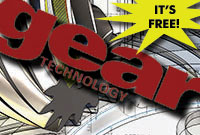
Trying to Reason with the Holiday Season
 I am a big fan of randomness; to me living in a place where the weather was the same everyday would be a real trial. Given the need some of our species have to organize everything it is somewhat surprising that we have stayed with a seven-day week and months of varying lengths. You never hear the crew of the Starship Enterprise talk about the forthcoming "weekend" and I wonder if all that warp driving has thoroughly messed up their sleep cycles.
I am a big fan of randomness; to me living in a place where the weather was the same everyday would be a real trial. Given the need some of our species have to organize everything it is somewhat surprising that we have stayed with a seven-day week and months of varying lengths. You never hear the crew of the Starship Enterprise talk about the forthcoming "weekend" and I wonder if all that warp driving has thoroughly messed up their sleep cycles.
Top 10 Articles of 2017
In case you missed them, here are the articles that generated the most interest on geartechnology.com this year:Gear Design Deconstructed
How difficult is it to design a gear? It depends upon whom you ask.
Gear Grinding Today
New divisions, open houses and the continued rise of the Industrial Internet of Things - There's been a lot going on in gear grinding in the past year.
Skiving - A Manufacturing Renaissance
Skiving will be front and center when the gear industry comes together in Columbus this October. Attendees will find dedicated skiving equipment, multifunctional machines with skiving options and a slew of new cutting tools, machine designs and modifications to make the process more efficient and robust.
Heat Treating 4.0
Suppliers are working hard to make sure their heat treating equipment is controllable, repeatable and efficient, and manufacturers continue to incorporate technology that gives heat treaters and their customers more information about what's going on inside the magic box.
Ask Not What Your Heat Treater Can Do for You...
When sending gears to be heat treated, manufacturers can end up unwittingly making mistakes that slow down turnaround time. We talked to some heat treaters to get their best advice on how you can help them help you.
MicroPulse and MicroShift for Ground Bevel Gearsets
Grinding of bevel and hypoid gears creates on the surface a roughness structure with lines that are parallel to the root. Imperfections of those lines often repeat on preceding teeth, leading to a magnification of the amplitudes above the tooth mesh frequency and their higher harmonics. This phenomenon is known in grinding and has led in many cylindrical gear applications to an additional finishing operation (honing). Until now, in bevel and hypoid gear grinding, a short time lapping of pinion and gear after the grinding operation, is the only possibility to change the surface structure from the strongly root line oriented roughness lines to a diffuse structure.
Repair of Large, Surface-Degraded Industrial Gears - a New Approach
This paper presents a new approach to repair industrial gears by showing a case study where pressure angle modification is also considered, differently from the past repairing procedures that dealt only with the modification of the profile shift coefficient. A computer program has been developed to automatically determine the repair alternatives under two goals: minimize the stock removal or maximize gear tooth strength.
Oil-Out Endurance Under the Lens
Oil-out conditions, or conditions in which an aircraft is operating without any oil in its gearbox or transmission, are devastating for an aircraft's hardware. Even the sturdiest gears usually can't last 30 minutes under such conditions before they catastrophically fail, and the whole system usually follows shortly after. That doesn't leave pilots with a whole lot of time to find a suitable location to land in the case of an oil-out emergency.
2017 State of the Gear Industry
Gear Technology's annual State of the Gear Industry survey polls gear manufacturers about the latest trends and opinions relating to the overall health of the gear industry.
Surface Characteristics of Hobbed Gears
Gear hobbing is one of the most productive manufacturing processes for cylindrical gears. The quality of the gears is a result of the tool quality, the precision of the workpiece, tool clamping and kinematics of the machine. The dry gear hobbing process allows machining of gears with a quality according to the DIN standard up to IT 5. To evaluate which gear quality is possible to machine with a given clamping and hob, it is useful to simulate the process in advance.

PUBLIC AUCTION: MAJOR HELICOPTER GEAR MFR. PLANT CLOSING
Webcast & Onsite AuctionNorthstar Aerospace - Complete Plant Closure
Wednesday, January 17th @ 10:00AM EST
PREVIEW & INSPECTION: Tuesday, January 16th, 9am to 4pm or by Appointment
180 Market Drive, Milton, Ontario (Toronto)
LATE MODEL GEAR & MACHINING EQUIPMENT
For further info. contact: Mike McIntosh at (416) 242-3560 or email MMcintosh@maynards.com

Small Batch Production Made in the USA
While manufacturing is our profession, gear cutting is our craft. We have the ability to cut a wide range of gears up to 126" in diameter, with a focus and expertise in bevel gearing up to 80" in diameter. See our complete range of capacities here.
Read More

Seminar: Heat Treating for Gear Manufacturing
January 16-17, 2018 - 2-day seminar featuring 7 leading Metallurgical/Heat Treat Experts who will present a study of Heat Treating Methods and Dealing with Distortion. Featuring: Carburizing, Hardening/Quenching, Die Quenching and Straightening, Vacuum Carburizing and Quenching, Nitriding, Induction (Simultaneous Dual Frequency) Hardening. For Commercial, Automotive and Aerospace.
For more information

Renew Today and Rest Easy
Subscribe (or re-subscribe) today to keep your Gear Technology coming without interruption. Digital subscriptions are free, anywhere in the world (mailed copies are free in North America). Do this today, and we won't bother you with pesky renewal notices or telemarketers for a full year!
Read More